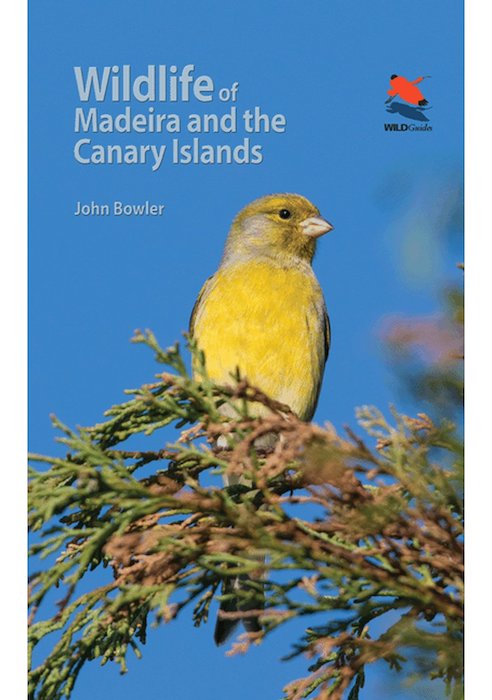Wildlife of Madeira and the Canary Islands:
(A Photographic Field Guide to Birds, Mammals, Reptiles, Amphibians, Dragonflies and Butterflies)
By John Bowler | WILDGuides | 2018 | Paperback | 224 pages, colour photos, colour distribution maps | ISBN-13: 9780691170763 |

The Publisher’s View: This beautifully illustrated photographic field guide is the first to focus on the identification of the fascinating, diverse and unique wildlife of Madeira and the Canary Islands – featuring the birds, mammals, reptiles, amphibians, butterflies and dragonflies that are most likely to be seen. Richly illustrated introductory sections cover the key wildlife sites to visit on each of the islands, and provide an overview of the islands’ geography, climate, habitat types and current conservation efforts. Stunning colour photographs highlight the key identification features of each species, and the accompanying text covers status, habitat preference, behaviour and, where appropriate, calls. Wildlife of Madeira and the Canary Islands also features an up-to-date distribution map for each species. Complete with an attractive, user-friendly design, this is a must-have guide for all visitors to these magical islands.
The Author: John Bowler is a conservation officer on the island of Tiree in the Scottish Inner Hebrides. He is the author of a number of field guides, including Wildlife of Seychelles (Princeton WILDGuides).
Fatbirder View: My overall verdict would be ‘pretty good’. I’m not a lover of photoguides but this book has the advantage of covering a relatively small number of species so can display quite large images which helps with clarity and colour trueness. Of such guides I’d say these images are among the least variable so well done for that.
The overall idea of combining the Canaries with Madeira makes a lot of sense in terms of British holidaymakers at least. Many people will visit some or all of the islands over a number of years and it’s a handy guide for those vaguely interesting in knowing what they see on walks and other outings as well as more series birders. Although the latter would probably make room for their favourite European fieldguide as well. This wins out on accessibility without dumbing down to the irritation of us obsessives. Having said that I personally find it an irritation that scientific names are not used alongside ‘common’ names. Moreover, there will be non-native English speakers who would know many of these birds by different common names and scientific names clear up such confusions.
Where it falls down is in not indicating clinching ID features on the images (although the text sometimes covers them) and more importantly on presenting images that are virtually all closer than species will be seen. This is especially important for high-flying raptors and distant seabirds.
Nevertheless, it is, as I say, ‘pretty good’ and deserves a place in your suitcase.
Buy this book from NHBSFatbirder
